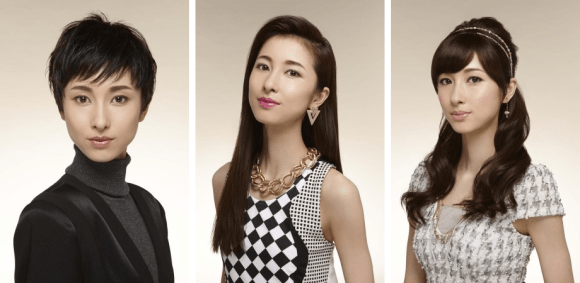
Shiseido tracks Japanese makeup movements through the decades.
As Japan’s premiere cosmetics manufacturer, Shiseido keeps its finger on the pulse of the Japanese fashion scene. But while the company has thrived by staying constantly contemporary, it was actually founded all the way back in 1872.
In its nearly 150 years of operation, Shiseido has had a front-row seat as makeup trends come and go in Japan, and the company recently took a moment to look back on many of them. Setsuko Suzuki, Shiseido’s senior hair and makeup artist, pegs the 1920s as when Western-style cosmetics achieved widespread use in Japan.
At first, the most popular looks blended Western and traditional Japanese aesthetics. This meant fine eyebrows with a pronounced downward drop and heavy eyeshadow at the bottom corners of the eye to produce a droopy, sleepy look, as well as lipstick applied to create a small, puckered mouth.
▼ 1920s
In the 1930s, more overseas beauty concepts started to be incorporated, with greater eyebrow curves and bolder lipstick, which were in vogue with screen actresses at the time.
▼ 1930s
Suzuki next checks in with makeup trends following World War II, with determined, squared eyebrows becoming popular as Japan buckled down to rebuild the country in the 1950s.
▼ 1950s
Things became much more colorful in the 1960s, when Japanese women began to break with tradition and showed an increasing fondness for shades other than the indigenous Japanese cosmetic standards of white, black, and red. Pale lipstick took off along with eye makeup simulating double-folded eyelids and false eyelashes as Japanese women longed to emulate the look of Western fashion models, as opposed to actresses. Suntanned skin also became popular for the first time in Japan’s history, after centuries of being considered a mark of an unpleasant, labor-intensive lifestyle.
▼ 1960s
The social unrest of the 1970s, including the Vietnam War, environmental crises, and economic malaise was reflected in dark eye shadow and sharply thin eyebrows.
▼ Early 1970s
In the late 1970s, Japan began to reevaluate its indigenous beauty, partially reversing decades spent chasing Western fashion.
▼ Late 1970s
This confidence carried over into the Bubble Economy of the early 1980s, when the trend of thinning eyebrows was finally curbed.
▼ Early 1980s
As the economic high times continued to roll, even career-oriented women began craving a more feminine look, and while eye makeup became more natural in coloring, lipsticks became brighter.
▼ Late 1980s-early 1990s
The late 1990s saw an unprecedented fragmentation of Japanese fashion, with the population splintering off into groups such as flashy gyaru, elegant white-collar professionals, or mixtures of hip-hop and Japanese street style. One overarchingly popular trend, though, was brown-dyed hair.
▼ Late 1990s-early 2000s
Starting from the mid-2000s, an increasing number of women started turning to non-cosmetic beauty enhancers, such as hair extensions, eyelash perms, and contact lenses meant to make the pupils appear larger.
▼ Late 2000s
However, Shiseido says that the March 11 earthquake and tsunami of 2011 caused many women to ask themselves what is truly important in life, which resulted in a shift away from a heavily made up look and towards a relaxed, comforting appearance. In particular, baggy eyes (called namidabukuro, or “tear bags” in Japanese) and blushed (yuagari nobose, or “dizzy from a hot bath”) cheeks became popular, creating a comforting, cathartic aura.
▼ Post-2011 earthquake and tsunami
And finally, the most recent makeup trends borrow heavily from the 1980s, especially in a preference for bright red lipstick.
▼ Today
Just more proof that nothing ever permanently goes out of style.
Source: Shiseido
Top image: Shiseido (edited by SoraNews24)
Insert images: Shiseido

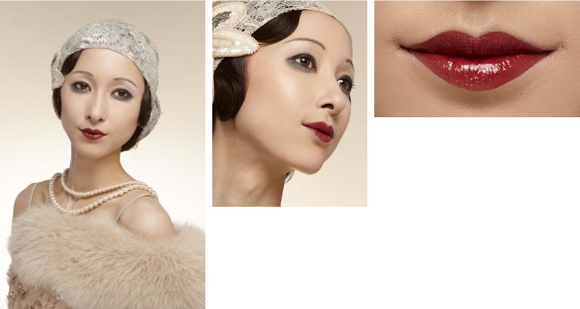
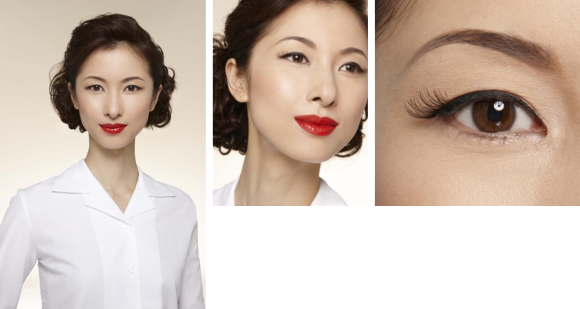
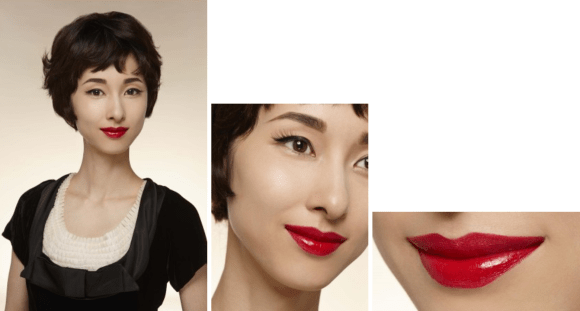
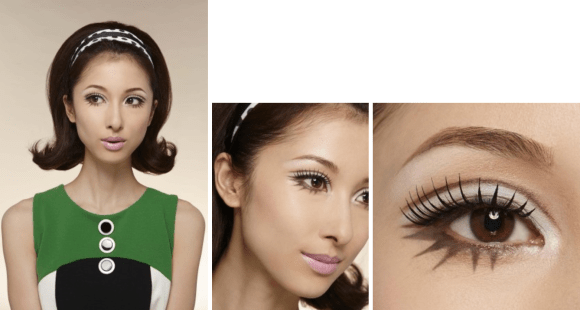
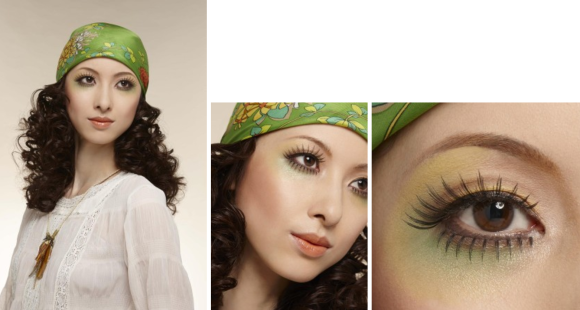
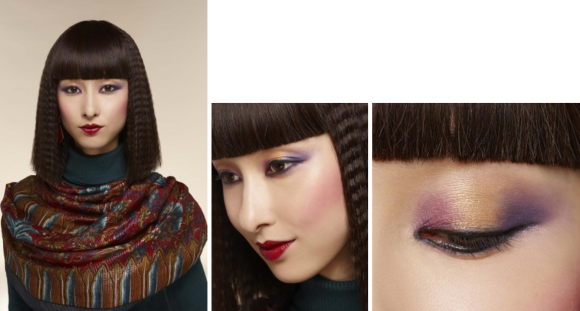
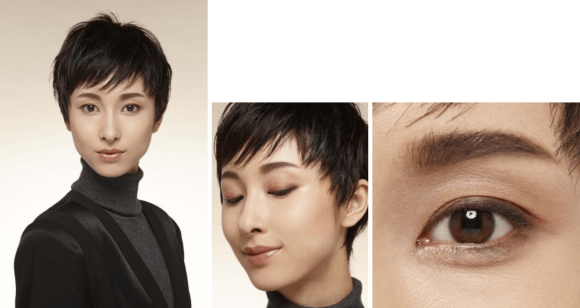
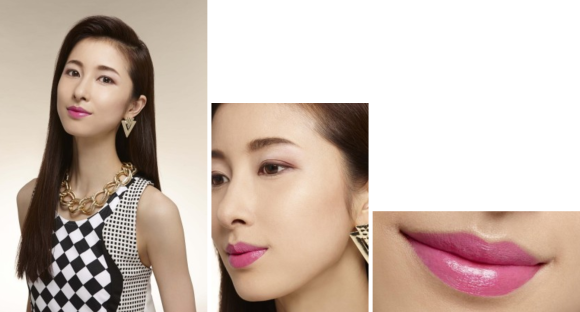

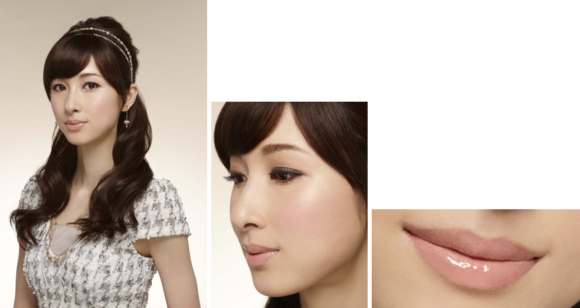
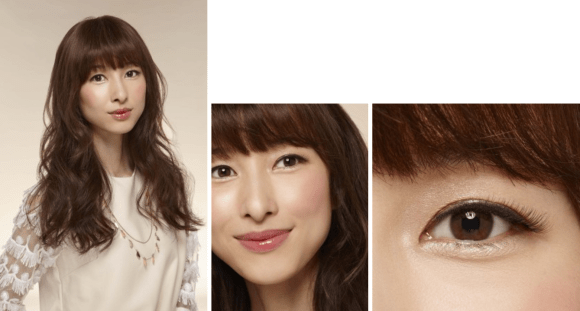
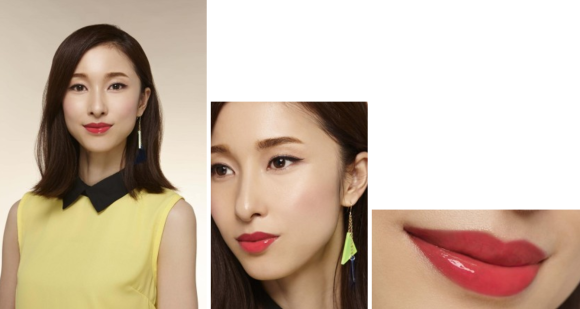
 Japanese cosmetics company’s eight-model video has one big secret【Video】
Japanese cosmetics company’s eight-model video has one big secret【Video】 Seven Japanese drugstore beauty products loved by women abroad
Seven Japanese drugstore beauty products loved by women abroad Handsome sunblock studs show off their muscles, lack of sunburns in sizzling Shiseido ad【Video】
Handsome sunblock studs show off their muscles, lack of sunburns in sizzling Shiseido ad【Video】 Japanese star’s makeup transformation goes viral online 【Videos】
Japanese star’s makeup transformation goes viral online 【Videos】 4 Japanese beauty fads that Westerners just don’t understand
4 Japanese beauty fads that Westerners just don’t understand Foreigner’s request for help in Tokyo makes us sad for the state of society
Foreigner’s request for help in Tokyo makes us sad for the state of society Seaside scenery, history, and so many desserts on Yokohama’s Akai Kutsu【Japan Loop Buses】
Seaside scenery, history, and so many desserts on Yokohama’s Akai Kutsu【Japan Loop Buses】 We try out “Chan Ramen”, an underground type of ramen popular in the ramen community
We try out “Chan Ramen”, an underground type of ramen popular in the ramen community Smash Bros. director Sakurai stabs Kirby in the face, has delicious justification for it
Smash Bros. director Sakurai stabs Kirby in the face, has delicious justification for it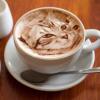 Ultra-realistic cat latte art blows us away, puts us off our coffee
Ultra-realistic cat latte art blows us away, puts us off our coffee Akihabara pop-up shop sells goods made by Japanese prison inmates
Akihabara pop-up shop sells goods made by Japanese prison inmates Red light district sushi restaurant in Tokyo shows us just how wrong we were about it
Red light district sushi restaurant in Tokyo shows us just how wrong we were about it Japanese city loses residents’ personal data, which was on paper being transported on a windy day
Japanese city loses residents’ personal data, which was on paper being transported on a windy day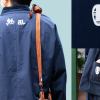 Ghibli Museum becomes “Hot Wind Museum” for traditional Japanese range with No Face and Totoro
Ghibli Museum becomes “Hot Wind Museum” for traditional Japanese range with No Face and Totoro Historical figures get manga makeovers from artists of Spy x Family, My Hero Academia and more
Historical figures get manga makeovers from artists of Spy x Family, My Hero Academia and more McDonald’s new Happy Meals offer up cute and practical Sanrio lifestyle goods
McDonald’s new Happy Meals offer up cute and practical Sanrio lifestyle goods Japanese ramen restaurants under pressure from new yen banknotes
Japanese ramen restaurants under pressure from new yen banknotes French Fries Bread in Tokyo’s Shibuya becomes a hit on social media
French Fries Bread in Tokyo’s Shibuya becomes a hit on social media Studio Ghibli releases new action figures featuring Nausicaä of the Valley of the Wind characters
Studio Ghibli releases new action figures featuring Nausicaä of the Valley of the Wind characters New private rooms on Tokaido Shinkansen change the way we travel from Tokyo to Kyoto
New private rooms on Tokaido Shinkansen change the way we travel from Tokyo to Kyoto Tokyo Tsukiji fish market site to be redeveloped with 50,000-seat stadium, hotel, shopping center
Tokyo Tsukiji fish market site to be redeveloped with 50,000-seat stadium, hotel, shopping center Beautiful Ghibli sealing wax kits let you create accessories and elegant letter decorations【Pics】
Beautiful Ghibli sealing wax kits let you create accessories and elegant letter decorations【Pics】 Studio Ghibli releases Kiki’s Delivery Service chocolate cake pouches in Japan
Studio Ghibli releases Kiki’s Delivery Service chocolate cake pouches in Japan New definition of “Japanese whiskey” goes into effect to prevent fakes from fooling overseas buyers
New definition of “Japanese whiskey” goes into effect to prevent fakes from fooling overseas buyers Our Japanese reporter visits Costco in the U.S., finds super American and very Japanese things
Our Japanese reporter visits Costco in the U.S., finds super American and very Japanese things All-you-can-drink Starbucks and amazing views part of Tokyo’s new 170 meter-high sky lounge
All-you-can-drink Starbucks and amazing views part of Tokyo’s new 170 meter-high sky lounge More foreign tourists than ever before in history visited Japan last month
More foreign tourists than ever before in history visited Japan last month New Pokémon cakes let you eat your way through Pikachu and all the Eevee evolutions
New Pokémon cakes let you eat your way through Pikachu and all the Eevee evolutions Disney princesses get official manga makeovers for Manga Princess Cafe opening in Tokyo
Disney princesses get official manga makeovers for Manga Princess Cafe opening in Tokyo Sales of Japan’s most convenient train ticket/shopping payment cards suspended indefinitely
Sales of Japan’s most convenient train ticket/shopping payment cards suspended indefinitely Sold-out Studio Ghibli desktop humidifiers are back so Totoro can help you through the dry season
Sold-out Studio Ghibli desktop humidifiers are back so Totoro can help you through the dry season Japanese government to make first change to romanization spelling rules since the 1950s
Japanese government to make first change to romanization spelling rules since the 1950s Ghibli founders Toshio Suzuki and Hayao Miyazaki contribute to Japanese whisky Totoro label design
Ghibli founders Toshio Suzuki and Hayao Miyazaki contribute to Japanese whisky Totoro label design Doraemon found buried at sea as scene from 1993 anime becomes real life【Photos】
Doraemon found buried at sea as scene from 1993 anime becomes real life【Photos】 Tokyo’s most famous Starbucks is closed
Tokyo’s most famous Starbucks is closed One Piece characters’ nationalities revealed, but fans have mixed opinions
One Piece characters’ nationalities revealed, but fans have mixed opinions We asked a Uniqlo employee what four things we should buy and their suggestions didn’t disappoint
We asked a Uniqlo employee what four things we should buy and their suggestions didn’t disappoint Princesses, fruits, and blacksmiths: Study reveals the 30 most unusual family names in Japan
Princesses, fruits, and blacksmiths: Study reveals the 30 most unusual family names in Japan New Japanese video chat program adds digital makeup to the faces of female telecommuters 【Video】
New Japanese video chat program adds digital makeup to the faces of female telecommuters 【Video】 Cosmetic wizardry: Asian women removing makeup to reveal their true selves goes viral【Video】
Cosmetic wizardry: Asian women removing makeup to reveal their true selves goes viral【Video】 Who shall I be today? The amazing makeup skills of Zawachin
Who shall I be today? The amazing makeup skills of Zawachin Our cat-loving reporter decided that this year, for Japan’s Cat Day, she’d become a jellicle cat
Our cat-loving reporter decided that this year, for Japan’s Cat Day, she’d become a jellicle cat Japanese high school boy wows netizens with his cute girl-next-door looks
Japanese high school boy wows netizens with his cute girl-next-door looks Beautiful YouTuber shows Japanese and Korean makeup trend differences in half-faced comparison
Beautiful YouTuber shows Japanese and Korean makeup trend differences in half-faced comparison Kailijumei’s line of color-changing, flower lipsticks are all the rage now across the world
Kailijumei’s line of color-changing, flower lipsticks are all the rage now across the world How to say “I love you” in Japanese – 47 different ways 【Videos】
How to say “I love you” in Japanese – 47 different ways 【Videos】 New Year lucky bag from makeup giant Shu Uemura may disappoint makeup buffs but thrill otaku
New Year lucky bag from makeup giant Shu Uemura may disappoint makeup buffs but thrill otaku Anya makeup how-to for transforming into the Spy x Family star for Halloween or cosplay
Anya makeup how-to for transforming into the Spy x Family star for Halloween or cosplay Mr. Sato went to Ganguro Cafe and discovered his beautiful inner gyaru 【Pics】
Mr. Sato went to Ganguro Cafe and discovered his beautiful inner gyaru 【Pics】 Charming Cardcaptor Sakura, Magic Knight Rayearth makeup sets revealed for February release
Charming Cardcaptor Sakura, Magic Knight Rayearth makeup sets revealed for February release Japanese beauty magazine asks readers to identify the one crossdresser among 12 beautiful women
Japanese beauty magazine asks readers to identify the one crossdresser among 12 beautiful women Japanese Tumblr user drops hammer on debate of if Caucasian girl’s Japan-themed party was racist
Japanese Tumblr user drops hammer on debate of if Caucasian girl’s Japan-themed party was racist List of jobs in Japan that “don’t allow women to wear glasses” upsets fans of vision, meganekko
List of jobs in Japan that “don’t allow women to wear glasses” upsets fans of vision, meganekko James Corden joins comedian Naomi Watanabe, John Legend, others for hilarious SK-II commercials
James Corden joins comedian Naomi Watanabe, John Legend, others for hilarious SK-II commercials
Leave a Reply